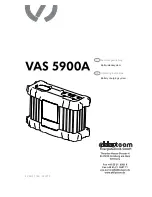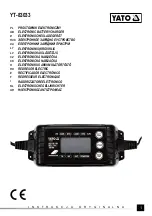
Installation
TruSine 4.5 kW Inverter
Page 20
Owners Manual
5. DC power input cables which pass through steel or other ferrous metal walls need to pass through the same
hole. If two holes are required, cut a slot connecting the two holes to prevent a transformer effect.
6. Do not allow wire fragments or metal shavings to fall into the DC wiring compartment or to enter the inverter
in any way. Severe inverter damage will result which is not covered by the warranty.
7. Do not connect the inverter to the battery at this time. Final battery connections will be made after all
installation issues have been inspected.
8. WARNING: A poorly made high current connection may result in risk of fire and personal injury.
9. WARNING: Be sure of the polarity of the DC input wiring. Reverse polarity may severely damage your
inverter and is not covered under warranty. Risk of fire or explosion of batteries may occur due to very high
currents.
10.A DC fuse is required to properly protect the inverter.
11.The table below shows the recommended minimum cable size which should be used. Wire sizing charts
published in the NEC may allow a greater amp capacity than we recommend. We have sized the cable for a
maximum voltage drop to maintain better performance of your inverter installation. The inverter’s DC cable
terminal lugs can accommodate cable sizes up to 250 MCM.
TruSine 4500 DC Cable and Fuse Sizing Chart
Model Number
TSC24-4500 and TSC24-4500D
Distance from battery to inverter in feet
(Length of cable is 2 times the distance.)
Cable Size
4/0
16
250MCM
19
Fuse Bussmann ANL500 Vanner 03646
Fuse Holder Bussmann 4164 Vanner 03637
DC Wiring Installation
The DC input terminals are located in the field wiring compartment located at the front right side of the unit and
accessed from the top. The connections are compression terminals which require a stripped cable and are
tightened by an Allen wrench. The positive and negative cables enter the compartment through separate strain
reliefs located at the right front of the unit.
WARNING
Never make electrical connections "live". Make the connections to the inverter first and the battery last. Make
certain the ON/OFF control switch on front of inverter is in the OFF position before connecting to the battery.
NOTE
Severe damage to the inverter will result, which is not covered under warranty, if wire fragments or other metal
particles enter the inverter through the DC wiring compartment.
Procedure
Step 1:
Turn the inverter OFF and disconnect all AC and DC power to the wiring harness. Make sure power
to the inverter wiring is disconnected. Verify that the inverter is turned OFF (the Inverter ON-OFF
switch is in the OFF position).
Step 2: Select a location for the unit. An ideal installation location has the following characteristics:
•
Close to the battery (usually within six feet).
•
Protected from the weather.
•
Well ventilated.
Step 3: Route DC input cables. Route the negative and positive DC input cables from the inverter to the
battery. If required, protect cables where they contact hard, sharp edges.
Step 4: Install the in-line fuse. Install the in-line fuse in the red, positive DC input cable between the battery
and inverter, within 18 in. of the battery or DC wiring bus system.
Step 6: Connect the inverter to the battery.
A)
Remove the cover plate on the DC cable compartment exposing the positive and negative Allen head
terminal lugs.
B)
Remove the two Allen screws from the terminal lugs.
C)
Strip the positive and negative DC cable ends 3/4 in.











































